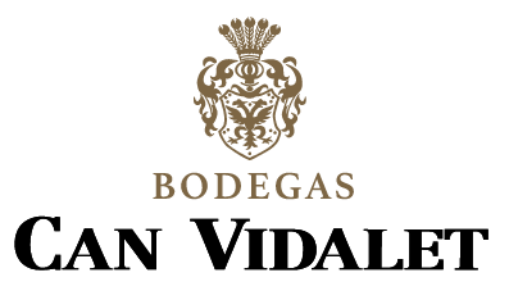If you want to know how to taste a red wine, you are in the right place. Whether you are a beginner in the world of wine or an accomplished wine lover, knowing the tasting process is key to appreciate all that a good red wine has to offer.
You don't need to be a sommelier, with just a little curiosity, attention to detail and a desire to enjoy, in this guide you will learn step by step how to taste a red wine. What to look for in each phase and how to interpret its aromas, colors, flavors and textures.
Learn about red wine
Red wine is obtained by fermenting the juice of black grapes together with their skins, which provides its characteristic color, structure and tannins. Depending on the variety, aging and climate where the grapes are grown, it can have very different profiles. From fresh and fruity to intense, spicy or with hints of wood.
At Can Vidalet, we take care of every detail of the process, from the vineyard to the bottle, to create red wines that reflect authenticity, balance and personality. Our red wines are the result of precise vinification and ageing designed to bring out the best of each variety, without losing the identity offered by the Mallorcan terroir.

Red wine varieties
The different red grape varieties provide very different sensory profiles. Thanks to this characteristic, some of the most representative varieties of quality wines you can find can be elaborated:
- Merlot
Merlot wine is usually smooth, round and with silky tannins. It presents aromas of ripe plums, black cherries and, in aging, touches of cocoa or tobacco. In the mouth it is usually pleasant with a medium finish, ideal for those who are new to red wine.
- Callet
Perfect for red wines that are enjoyed young and without oak aging, this grape native to Mallorca, gives light, fresh and low alcohol content wines. Callet wines tend to be very gastronomic and subtle in style, with aromas of red fruits and Mediterranean herbs.
- Syrah
Very popular in warm climates, it offers reds with great concentration and silky texture. It produces intense, full-bodied wines with a dark color. Its spicy aromas (pepper, clove), black fruit and smoky notes stand out when aged in oak barrels.
- Cabernet Sauvignon
One of the noblest varieties in the world. It gives structured, tannic wines, with aromas of blackcurrant, green bell pepper, mint or leather. It brings longevity and elegance in aging, ideal for long aging and powerful pairings.
At Bodegas Can Vidalet, we produce all these varieties of red wines, and we invite you to enjoy the best wine tasting in a vineyard in Mallorca, with varieties that express the best of the Mediterranean terroir.

Tasting phases
Now let's get to the heart of this guide: how to taste a red wine. Tasting is divided into three main phases involving sight, smell and taste. Each reveals clues about the quality, style and complexity of the wine.
Visual phase
The first contact and appreciation of the wine is with the eyes. Pour the wine into a suitable glass and observe it against the light. Tilt the glass against a light background, preferably white to better appreciate the nuances of color.
- Color: Young red wines usually have violet or cherry tones. With age they turn to garnet, ruby or tile.
- Brightness: A good wine has a clean, bright and lively appearance.
- Intensity: Refers to the intensity of color. High in powerful reds, low in light ones.
- Tears: These are the drops that fall down the glass, indicating density and alcohol content. If they are abundant and fall slowly, it may be a structured and full-bodied wine.
The hue also gives clues about the age and evolution of the wine.
Olfactory phase
This stage reveals much of the wine's character. Start by bringing the nose closer, do not rush and let the wine breathe in the glass. A well-oxygenated red wine can display its complexity more generously.
- Primary aromas: More volatile notes are perceived without shaking the glass. After swirling, new compounds are released. Fruity, spicy, floral, mineral or toasted aromas may appear.
- Evolution: Some red wines show successive layers of aromas. A complex wine changes after a certain time in the glass. In a good red wine you can find:
◦ Red or black fruits (cherry, blackberry, currant).
◦ Spices (pepper, vanilla, clove).
◦ Notes of aging (leather, tobacco, cedar).
◦ Herbal or earthy elements (dried leaf, fennel, truffle).

Tasting phase
The last phase is the tasting, the moment of savoring the wine. Take a small sip and run through your mouth with it.
- Attack: It is the first sensation (acid, smooth, powerful).
- Body: There are light, medium or full-bodied reds. Sensation of weight.
- Tannins: They can be silky or drying. Their quality defines part of the texture and/or astringency typical of red wines.
- Balance: Between alcohol, acidity, tannins and fruit.
- Finish: Refers to the persistence of flavor. A good red wine leaves a mark.
- Aftertaste: Key for elegant wines, these are the sensations that remain after swallowing.
If the wine improves with each sip and invites you to continue discovering it, you are in front of a great red wine.
Experience the best wine tasting in a vineyard in Mallorca
At Bodegas Can Vidalet we invite you to discover our wines in the place where they are born. Participate in the best wine tasting in a vineyard in Mallorca and learn all about our red wines directly with those who make them.
At Can Vidalet, we share with you our passion for wine in every glass. Our handcrafted reds are waiting for you to discover, savor and enjoy.
Contact us today and immerse yourself in the world of red wine like never before.

